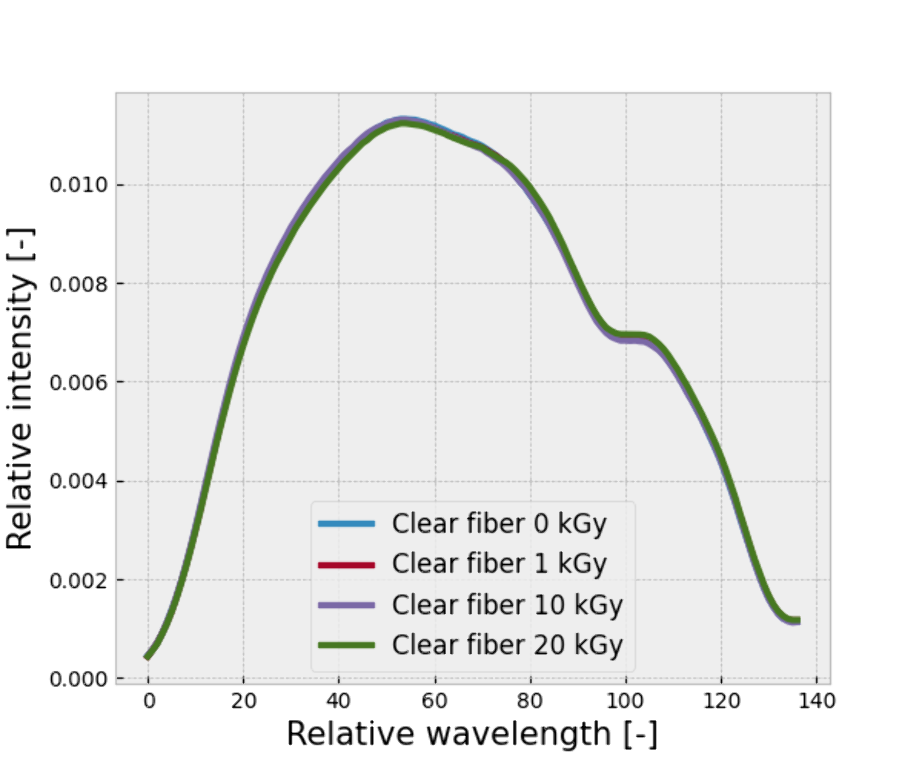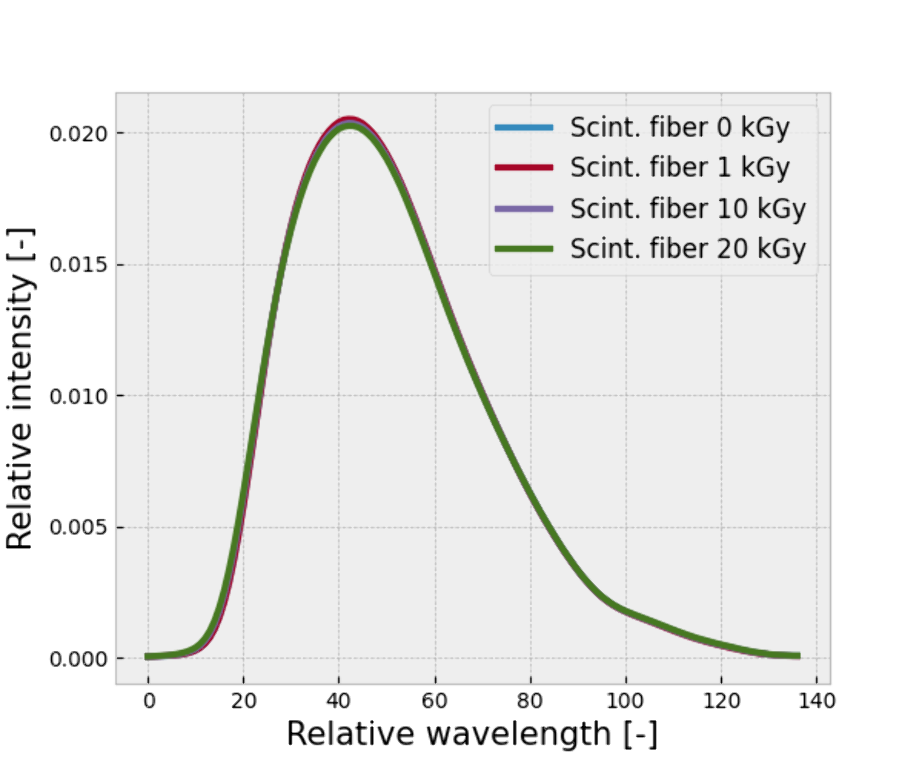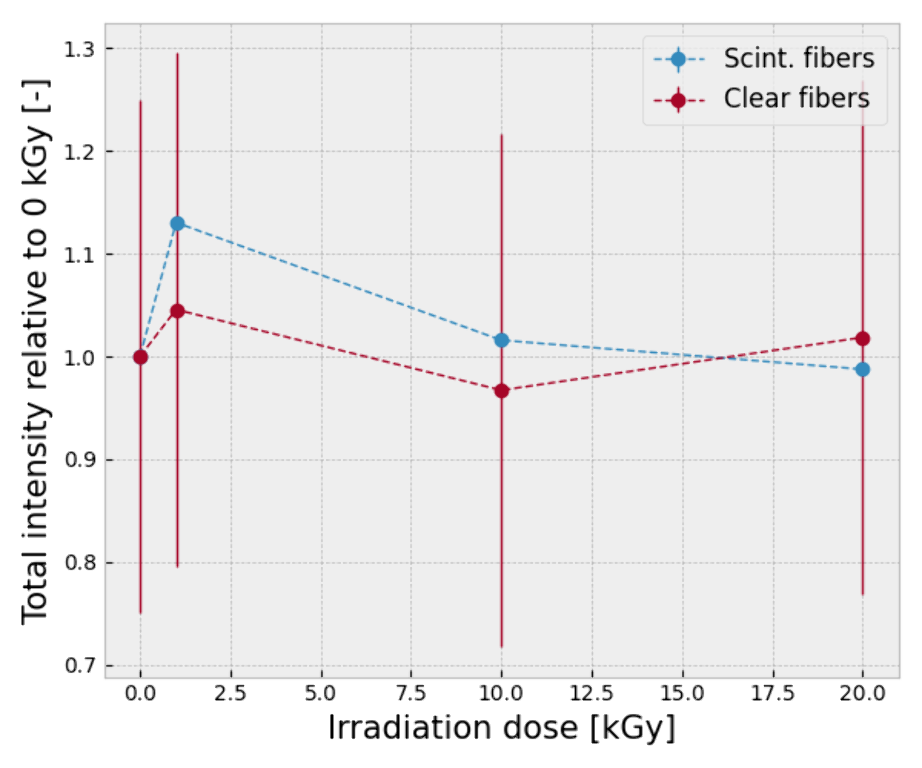Presenter of 2 Presentations
ION COLLECTION EFFICIENCY IN ULTRA-HIGH DOSE PER PULSE ELECTRON BEAMS
Abstract
Background and Aims
Ionometry is challenging in ultra-high dose per pulse (DPP) beams due to high level of ion recombination and it does not follow the current theoretical model. This investigation aims to measure the ion collection efficiency for different types of ionization chambers.
Methods
The response of three plane-parallel ionization chambers has been measured in an ultra-high DPP (0.5 to 2 Gy/pulse) 20 MeV electron beam. To measure the pulse charge, a non-destructive integrating current transformer (ICT) is used. The ICT signal was calibrated against the absorbed dose to water measured with alanine.
Results
The dependence of the ion collection efficiency is not linear with the DPP. The intra-type variations were evaluated to be in the 2-5% range as illustrated in figure 1. The ion collection efficiency of the Advanced Markus chamber has been compared to the Petersson et al. (DOI: 10.1002/mp.12111) empirical model. The difference between the measured and expected values from their model is consistent with the intra-type variation observed.

Figure 1: Ion collection efficiency in ultra-high dose per pulse electron beams
Conclusions
The investigation has shown that the ion collection efficiency of all ion chambers used for dosimetry in ultra-high DPP beams should be evaluated to improve uncertainty. It is important to develop a new theoretical model for ion recombination in ultra-high DPP beams.
Acknowledgement: This project 18HLT04 UHDpulse has received funding from the EMPIR programme co-financed by the Participating States and from the European Union’s Horizon 2020 research and innovation programme.
PERFORMANCE OF A PROBE-TYPE GRAPHITE CALORIMETER (AERROW) IN ULTRA-HIGH DOSE PER PULSE ELECTRON BEAMS
Abstract
Background and Aims
One of the challenges in investigating FLASH radiation therapy is the reliable measurement of the absorbed dose at ultra-high dose per pulse (DPP). This work aims to evaluate a probe-type graphite calorimeter (Aerrow) at ultra-high DPP.
Methods
The DPP was varied between 0.5 to 5.5 Gy. The signal was compared to the pulse charge measured by a non-destructive Integrating Current Transformer (ICT). In addition, a depth dose curve was measured and compared to an ionization chamber measurement and a Monte-Carlo simulation.
Results
The response of the calorimeter was proportional to the ICT signal. On average, the standard deviation of the calorimeter response was 0.2 % in high dose rate and reached 1% at the lower rate. In figure 1, the depth dose measurement with calorimeter and ionization chamber is compared to Monte-Carlo simulation. The half-value depths in water R50 obtained from measurement and simulation agree within 1 mm.

Figure 1: Depth dose in water measured and simulated.
Conclusions
Calorimetry is showing promising results for absorbed dose measurements. Calorimetry gets simpler at FLASH dose rates as the dose delivery is in a few seconds or less. The preliminary results show that advanced thermal insulation of the calorimeter is not required, nor the use of a heat lost correction factor.
Acknowledgement: This project 18HLT04 UHDpulse has received funding from the EMPIR programme co-financed by the Participating States and from the European Union’s Horizon 2020 research and innovation programme.
Author Of 6 Presentations
OVERVIEW AND CURRENT STATUS OF THE JOINT RESEARCH PROJECT UHDPULSE - “METROLOGY FOR ADVANCED RADIOTHERAPY USING PARTICLE BEAMS WITH ULTRA-HIGH PULSE DOSE RATES”
Abstract
Background and Aims
Dosimetry for FLASH radiotherapy, VHEE radiotherapy as well as for laser-driven beams cause significant metrological challenges due to the ultra-high dose rates and pulsed structure of these beams, in particular for real time measurements with active dosimeters. It is not possible to simply apply existing Codes of Practice available for dosimetry in conventional external radiotherapy here. However, reliable standardized dosimetry is necessary for accurate comparisons in radiobiological experiments, to compare the efficacy of these new radiotherapy techniques and to enable safe clinical application. UHDpulse aims to develop the metrological tools needed for reliable real-time absorbed dose measurements of electron and proton beams with ultra-high dose rate, ultra-high dose per pulse or ultra-short pulse duration.
Methods
Within UHDpulse, primary and secondary absorbed dose standards and reference dosimetry methods are developed, the responses of available state-of-the-art detector systems are characterised, novel and custom-built active dosimetric systems and beam monitoring systems are designed, and methods for relative dosimetry and for the characterization of stray radiation are investigated.
Results
Prototypes of different active dosimetry systems show promising results for real-time dosimetry for particle beams with ultra-high pulse dose rates. The results of the UHDpulse project will be the input data for future Codes of Practice.
Conclusions
A brief overview of the progress in the UHDpulse project and the involved institutions will be given.
Acknowledgement: This project 18HLT04 UHDpulse has received funding from the EMPIR programme co-financed by the Participating States and from the European Union’s Horizon 2020 research and innovation programme.
ION COLLECTION EFFICIENCY IN ULTRA-HIGH DOSE PER PULSE ELECTRON BEAMS
Abstract
Background and Aims
Ionometry is challenging in ultra-high dose per pulse (DPP) beams due to high level of ion recombination and it does not follow the current theoretical model. This investigation aims to measure the ion collection efficiency for different types of ionization chambers.
Methods
The response of three plane-parallel ionization chambers has been measured in an ultra-high DPP (0.5 to 2 Gy/pulse) 20 MeV electron beam. To measure the pulse charge, a non-destructive integrating current transformer (ICT) is used. The ICT signal was calibrated against the absorbed dose to water measured with alanine.
Results
The dependence of the ion collection efficiency is not linear with the DPP. The intra-type variations were evaluated to be in the 2-5% range as illustrated in figure 1. The ion collection efficiency of the Advanced Markus chamber has been compared to the Petersson et al. (DOI: 10.1002/mp.12111) empirical model. The difference between the measured and expected values from their model is consistent with the intra-type variation observed.

Figure 1: Ion collection efficiency in ultra-high dose per pulse electron beams
Conclusions
The investigation has shown that the ion collection efficiency of all ion chambers used for dosimetry in ultra-high DPP beams should be evaluated to improve uncertainty. It is important to develop a new theoretical model for ion recombination in ultra-high DPP beams.
Acknowledgement: This project 18HLT04 UHDpulse has received funding from the EMPIR programme co-financed by the Participating States and from the European Union’s Horizon 2020 research and innovation programme.
LINEARITY OF DIAMOND DETECTORS IN ULTRA-HIGH DOSE-PER-PULSE ELECTRON BEAMS
Abstract
Background and Aims
To characterize the biological "FLASH effect", it is necessary to have dosimeters available for reliable real-time measurements at ultra-high dose rates (> 40 Gy/s) and ultra-high dose-per-pulse (DPP > 0.6 Gy/pulse). A promising approach are detectors based on synthetic single crystal diamond working as Schottky photodiodes like the microDiamond T60019. The aim of this work is to investigate the dose response linearity of this detector type at ultra-high DPP.
Methods
Several different microDiamond detectors were investigated at PTB's research electron accelerator (20 MeV, 5 Hz, 2.5 µs pulse duration). To determine the DPP reference, the beam current monitor was calibrated against alanine.
Results
All microDiamonds respond linearly at low DPP (Figure 1). The response deviates from linearity with increasing DPP and finally reaches saturation. The DPP value at which non-linear behavior becomes significant varies between 0.1 and 2 Gy/pulse for the commercially available microDiamonds and is exemplar-dependent (SN). However, prototypes (B1, C1) demonstrated that the linear range can be extended.

Figure 1. Measured vs. actual DPP for different microDiamonds
Conclusions
The dose response of various microDiamond exemplars was investigated as a function of DPP. Commercially available microDiamonds have limitations in ultra-high DPP range. However, it has been shown with microDiamond prototypes that the linear range can be extended to the ultra-high DPP range. This shows that the microDiamond is in principle suitable for FLASH-RT dosimetry.
This project 18HLT04 UHDpulse has received funding from the EMPIR programme co-financed by the Participating States and from the European Union’s Horizon 2020 research and innovation programme.
PERFORMANCE OF A PROBE-TYPE GRAPHITE CALORIMETER (AERROW) IN ULTRA-HIGH DOSE PER PULSE ELECTRON BEAMS
Abstract
Background and Aims
One of the challenges in investigating FLASH radiation therapy is the reliable measurement of the absorbed dose at ultra-high dose per pulse (DPP). This work aims to evaluate a probe-type graphite calorimeter (Aerrow) at ultra-high DPP.
Methods
The DPP was varied between 0.5 to 5.5 Gy. The signal was compared to the pulse charge measured by a non-destructive Integrating Current Transformer (ICT). In addition, a depth dose curve was measured and compared to an ionization chamber measurement and a Monte-Carlo simulation.
Results
The response of the calorimeter was proportional to the ICT signal. On average, the standard deviation of the calorimeter response was 0.2 % in high dose rate and reached 1% at the lower rate. In figure 1, the depth dose measurement with calorimeter and ionization chamber is compared to Monte-Carlo simulation. The half-value depths in water R50 obtained from measurement and simulation agree within 1 mm.

Figure 1: Depth dose in water measured and simulated.
Conclusions
Calorimetry is showing promising results for absorbed dose measurements. Calorimetry gets simpler at FLASH dose rates as the dose delivery is in a few seconds or less. The preliminary results show that advanced thermal insulation of the calorimeter is not required, nor the use of a heat lost correction factor.
Acknowledgement: This project 18HLT04 UHDpulse has received funding from the EMPIR programme co-financed by the Participating States and from the European Union’s Horizon 2020 research and innovation programme.
SECONDARY STANDARD DOSIMETRY: UNDERSTANDING THE IONIZATION CHAMBERS FOR THE FUTURE ULTRA-HIGH DOSE RATE APPLICATIONS
Abstract
Background and Aims
Ionization chamber models developed during the last century by Boag have been and continue to be of great interest for daily
clinical practice. However, its simplicity is achieved at the cost of ignoring higher order effects that do not play
an important role in the dose rates found in conventional radiotherapy. However, when we get into the ultra
high dose rate regime, these models have shown important discrepancies.
Methods
A computational model was developed whose main objective is to solve the differential equations governing
charge transport along the ionization chambers. Charge collection efficiency and instantaneous current of different ionization chambers obtained from the model are currently evaluated with a set of measurements carried
out in collaboration with the PTB.
Results

Figure 1: Charge collection efficiency (CCE) for different analytical models currently used for saturation correction of ionization chambers and their simulation counterpart for a PPC40 chamber. CCE was evaluated for a plane-parallel ionization chamber with 2 mm gap at 300 V and a pulse duration of 2.5 μs at reference temperature and pressure conditions.

Figure 2: Comparison between instantaneous current from simulation and measured at 4 Gy/pulse and 400 V using a ROOS chamber.
Conclusions
Our computational model, which is still under development, shows better agreement to experimental data than existing analytical models and a preliminary version of this software has been released for testing.
Acknowledgement
This project 18HLT04 UHDpulse has received funding from the EMPIR programme co-financed by the Participating States and from the European Union’s Horizon 2020 research and innovation programme.
PLASTIC SCINTILLATOR UNDER ULTRA-HIGH DOSE RATE ELECTRON BEAM: LONG TERM DAMAGES AND CHANGES IN OPTICAL RESPONSE
Abstract
Background and Aims
Background and aims: Scintillation detectors have advantages that could benefit dosimetry for FLASH radiotherapy, but radiation damages could alter their properties. This study aims at determining long term effects of ultra-high dose rate electron radiation on scintillation dosimeters.
Methods
Methods: Samples of clear and scintillating fibers (1 mm diameter, 15 mm long) were irradiated under electron beams with ultra-high dose per pulse (1 Gy/pulse, 20 MeV, 5 Hz, 2.5 µs pulse length) up to a total dose of 20 kGy. Scintillation and transmission of irradiated samples were assessed using the Hyperscint RP200 platform (Medscint inc., Canada), around 3 months after irradiation.
Results
Results: Emission spectrum remained stable for all doses (figure 1), with a maximum RMS difference of 0.002 between irradiated and unirradiated samples. The total light production and transmission seems minimally affected from irradiation, up to 20 kGy (figure 2). The error bars result from the differences due to sample manufacturing. However, further investigations will have to be made to confirm this statement.


Figure 1: Emission spectra of the irradiated samples.

Figure 2: Total intensity measured as a function of total dose.
Conclusions
Conclusions: Scintillating and clear plastic fibers do not show significant long term alterations when irradiated up to 20 kGy with ultra-high dose rate electron beams.
Acknowledgements: This project 18HLT04 UHDpulse has received funding from the EMPIR programme co-financed by the Participating States and from the European Union’s Horizon 2020 research and innovation programme. Special thanks to the team of Medscint inc. for their help in analysing the irradiated samples.

